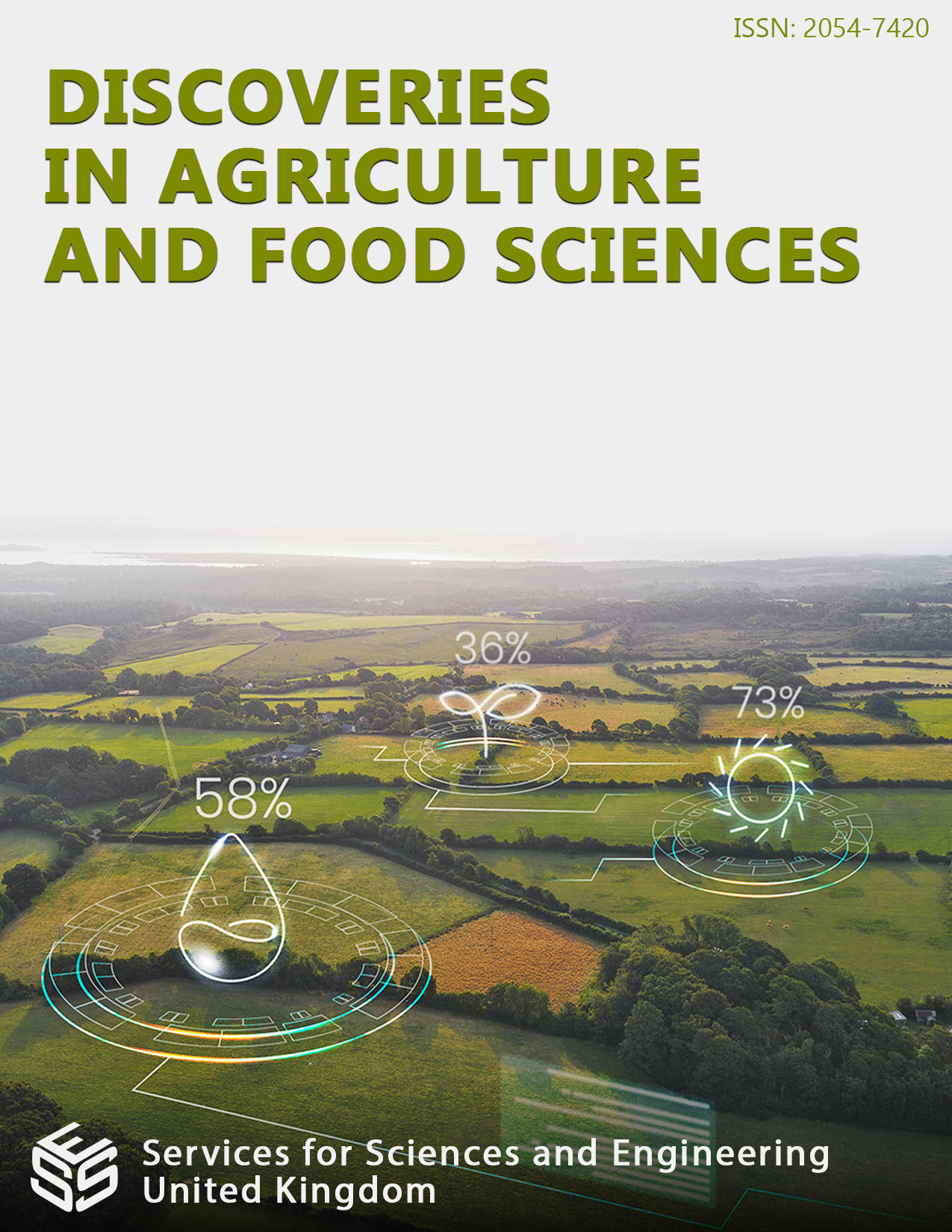Effect of Timing of Artificial Insemination on Fertility of Cows and Calf Sex Ratio in Arsi Cows
DOI:
https://doi.org/10.14738/tnc.111.13862Keywords:
Artificial insemination time, fertility rate, calf sex ratio, Arsi cowsAbstract
An on-station study was conducted to investigate the effect of the interval between artificial insemination (AI) and the beginning of estrus on the fertility and sex ratio of offspring in Arsi cows. Standing to be mounted was considered the beginning of estrus, and artificial inseminations were made 6 h (Group 1), 12 h (Group 2), 18 h (Group 3) and 24 h (Group 4) after the onset of estrus in the cows. Overall, 50 cows with parity between 2 and 4, body weight ranging from 250 to 300 kg were used for the purpose of this study. Ovulation was synchronized by administration of PGF2α hormone. Pregnancy diagnosis was performed by rectal palpation at 90 to 120 days post AI. Pregnancy rates were 60%, in each of the Groups 1, 2, 3 and 50% in group 4. The highest female to male ratio (P=0.041) of calves was obtained in Group 1. Whereas the highest male to female ratio was recorded in group 4. The number of artificial inseminations per pregnancy was within the economical limits in all groups. In conclusion, the results of this study indicated that the variation in time interval between the onset of estrus and artificial insemination alters the sex ratio of offspring in Arsi cows without affecting fertility parameters.
References
ATARC, 2003. Adami Tullu Agricultural Research Center, strategic planning and management document, P. 67.
Aschbacher, P., Smith, V. and Stone W. 1956. Observations on fertility following insemination at three stages of the same estrus. J. Anim. Sci. 51:952–958.
Bekele, T., 2005. Calf Sex Ratios in Artificially Inseminated and Natural Mated Female Crossbred Dairy Herd. In: proceedings of the 13 annual conference the Ethiopian Society of Animal Production. Addis Ababa, Ethiopia, pp: 225-230.
Dransfield, M., Nebel, R., Pearson, R. and Warnick, L.1998. Timing of insemination for dairy cows identified in estrus by a radiotelemetric estrus detection system. J. Dairy Sci., 81:
-1882.
Foote, R. 1979. Time of artificial insemination and fertility in dairy cattle. J. Dairy Sci. 62:355–358.
France, J., Graham, F., Gosling, L., Hair, P. and Knox, B. 1992. Characteristics of natural conceptual cycles occurring in a prospective study of sex preselection: fertility awareness symptoms, hormone levels, sperm survival, and pregnancy outcome. Int J Fertil; 37:244–55.
Herman, H., Mitchell, J., Doak, G. 1994. Reproductive efficiency breeding problems conception rates. In: The Artificial Insemination and Embryo Transfer of Dairy and Beef Cattle. 8th ed. Interstate Publishers, Danville, 197-205.
Hunter, R. 2001. Histophysiology of the fallopian tubes in relation to sperm binding, release and completion of capacitation. Ital. J. Anat. Embryol. 106: 279-289.
IAEA (2005). Improving artificial breeding of cattle in Africa. Guidelines and recommendations. A manual prepared under the framework of an IAEA Technical Cooperation Regional AFRA Project on Increasing and Improving Milk and Meat Production, with technical support from the Joint FAO/IAEA Division of Nuclear Techniques in Food and Agriculture.
Martinez, F., Kaabi, M., Martinez-Pastor, F., Alvarez, M., Anel, E., Boixo, J., Paz, P. and Anel, L. 2004. Effect of the interval between estrus onset and artificial insemination on sex ratio and fertility in cattle: a field study. Theriogenology, 62: 1264-1270.
Morrow, D., Roberts, S. and McEntee, K. 1985. Postpartum ovarian activity and involution of the uterus and cervix in dairy cattle. I. Ovarian activity. The Cornell Veterinarian, 59: 173-190.
Orkun, D., Mustafa, Ü., Murat, A. and Tayfur, B. 2005. The effect of artificial insemination timing on the sex ratio of offspring and Fertility in dairy cows. Turk. J. Vet. Anim. Sci.
; 31(1): 21-24.
Pursley, J., Silcox, R. and Wiltbank, M. 1998. Effect of time of artificial insemination on pregnancy rates, calving rates, pregnancy loss and gender ratio after synchronization of ovulation in lactating dairy cows. J. Dairy Sci.,81: 2139- 2144.
Rodriguez-Martinez, H., P. Tienthai, K. Suzuki, H. Funahashi, H. Ekwall and A. Johannisson, 2001. Involvement of oviduct in sperm capacitation and oocyte development in pigs. Reprod. Suppl., 58: 129-145.
Rohde, W., Porstmann, T. and Dorner, G. 1973. Migration of Y-bearing human spermatozoa in cervical mucus. J. Reprod. Fertil., 33: 167-169.
Rorie, R., Lester, T., Lindsey, B. and McNew, R. 1999. Effect of timing of artificial insemination on gender ratio in beef cattle. Theriogenology, 52: 1035-1041.
Seidel Jr GE, Schenk JL, Herickhoff LA, Doyle SP, Brink Z, Green RD, et al. Insemination of heifers with sexed sperm. Theriogenology 1999; 52:1407–20.
Seidel, J. 2003. Economics of selecting for sex: the most important genetic trait. Theriogenology; 59:585–98.
Webb, D. 2003. Artificial Insemination in Cattle. University of Florida, Gainesville. IFA Extension, DS 58: 1-4.
Downloads
Published
How to Cite
Issue
Section
License
Copyright (c) 2023 Alemayehu Arega, Tesfaye Alemu Aredo, Girma Chalchissa

This work is licensed under a Creative Commons Attribution 4.0 International License.






